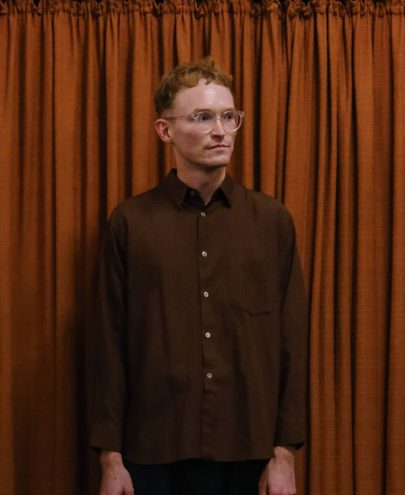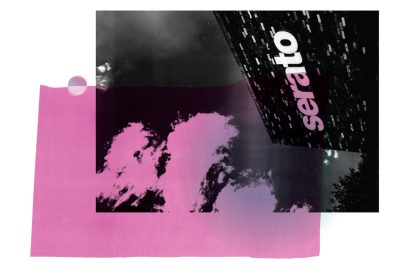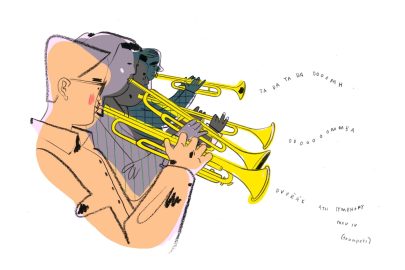Feb 28, 2014 Music
With the permission of his family, I have been spending time with the archives of Warren, promoter of that show, which are held in Auckland City Libraries’ special collections, as part of work for audioculture.co.nz, the NZ On Air-backed “noisy library of New Zealand music”, which launches this month.
It is a rich experience, because Phil Warren kept everything. His office, according to those who went there, was always a bombsite. But there’s a strong sense of order to the contents of the grey storage boxes.
The paperwork spans successive eras of Auckland’s popular culture, from the negotiations with M. Sayegh, acting for the Moodabe cinema family, over the 16-year-old Warren’s bold plan to hire the legendary Crystal Palace ballroom for Friday and Saturday nights, in 1958. (“The dances must be properly and orderly conducted at all times,” he is warned.)
The striking thing about Warren’s letters is their consistency of tone; matey or firm, depending on the matter at hand, but always concise, polite and precise. And typed in capitals.
Primarily, he liked to be clear on who owed what to whom. Those questions are at the heart of difficult exchanges over several years with The Chicks (sisters Suzanne and Judy Donaldson), their songwriter Shade Smith, and Smith’s band The Rumour over record royalties due — and separately, with John Rowles and his Hawaiian-based agent, Ted Te Ngaio.
The contracts do seem to be on Warren’s side. “I was appalled,” he wrote to Smith’s lawyer in 1972, “to read that they consider that if there was any indebtedness it was on our part.”
But it’s impossible not to feel sympathy for the artists. In the 60s especially, their share of record sales was pathetic. One statement shows Herma Keil making $35 from $3500 in sales — a one per cent royalty rate. The Rumour were on 4 per cent, which, as Smith ruefully pointed out to me, meant one cent per band member per record sold.
There are delights too, including Warren’s original notes as a judge of the NZBC’s blockbuster Studio One talent show. He was better-disposed to Space Waltz’s scandalising appearance in the show’s New Faces section than I recall. Scoring them 22 of a possible 30 points, he remarked: “Great TV potential — very now. Bowie Diamond Dogs. Not overdone with makeup. Great impact. Potential originality (own song). Grooming OK. Commercial!!”
But perhaps the real treasure is the paperwork for the biggest show of Warren’s career, the 1973 Stones tour — a peek into rockstar history. Between November 10 and 14, 1972, Warren wrote a series of letters to figures in the Stones’ organisation, following up a tip about a potential tour from the local branch of EMI and laying out his credentials.
“Promoter kept them all guessing over new show” ran the headline above Judy McGregor’s December 7 report for the Herald. He’d won the gig, as local agent for Australian promoter Paul Dainty. The Stones would play on Sunday, February 11.
Two sorts of bourbon for Jagger, Cuervo Gold tequila for Richards…
The requirements came in, from a list of booze to be stocked in the stars’ rooms at the Intercontinental (two sorts of bourbon for Jagger, Cuervo Gold tequila for Richards, “give him everything” for Charlie Watts), to the booze rider for the show itself:
“This list is considered essential to the success of the evening’s performance. Bill Wyman always performs with a bottle of LEIBFRAUMILCH ON STAGE (IN ICE BUCKET) and it would be very strange to see Keith Richards without the company of a good TEQUILA for him to be in top form.”
The stage rider also requires the provision of Alka-Seltzer.
There are remittances and receipts. Music stores the length of the country sold tickets at $4.90 each (Auckland’s Direction Records alone did a remarkable 4428 sales). Dr T.H. Marshall was paid $250 “to attendances on the Rolling Stones” and the bill at Fisherman’s Wharf came to $31.45 (three Stones had the john dory). The stadium cost $2000 to hire — plus $11.80 for the electricity used.
J.P. Leng of the Auckland Pigeon Club acknowledged a donation of $100 for the “loan of 1000 pigeons,” which were liberated as the band began to play. “Should you require our services in future, we should be pleased to oblige.”
There are letters. The mayoress Dame Barbara Goodman wrote to remind Warren of his kind past offer of tickets for any show — three, please. And Barbara of Papakura desperately wanted to meet the band: “I am only seventeen and have a 2-year-old son whom I adore he is the only other thing I live for.” She enclosed a photo. “Could you please try and assist me in any way possible I’d be that grateful.”
There is no word of whether she was successful in her quest, but, of course, Warren kept the letter.
Eventually, Warren was able to report a gross of just over $147,000 on the show, with 30,000-odd tickets sold (only 3955 remained unsold). The economics of the late 70s brutally curtailed his promotion business (he kept the nightclubs), but there was something no one could take away: with only nine weeks’ preparation, he’d pulled it off. The man with the ballroom background had brought the greatest rock’n’roll band in the world to Auckland.
First published in Metro, May 2013. Photograph of material from the Phil Warren collection by David Straight.





